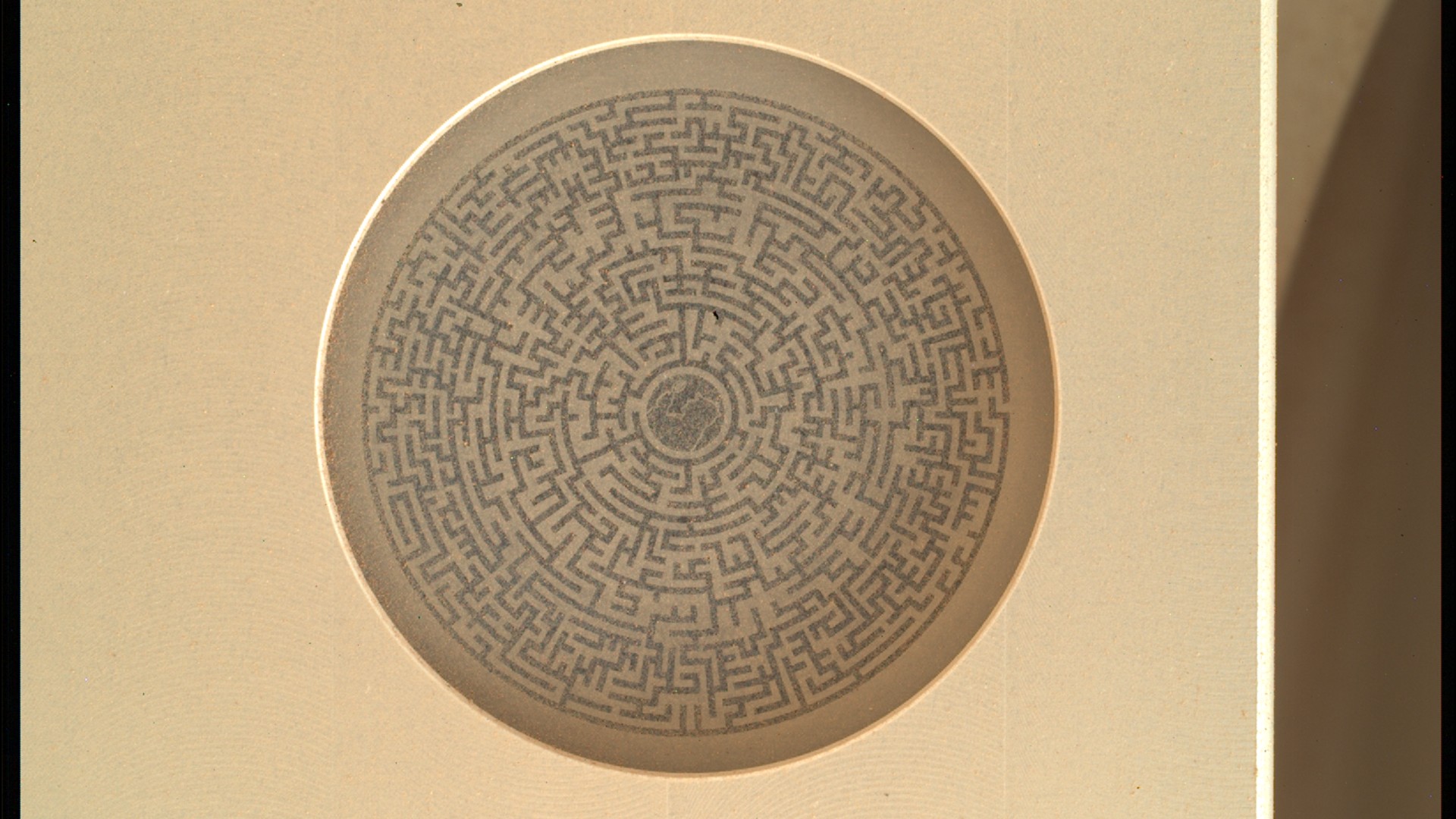'Star Wars' Science: Is the Force Contagious?

In the "Star Wars" universe, a mystical power known as the Forcedrives the battles between Jedi knights and their dark counterparts, the Sith. Ahead of the release of "Rogue One: A Star Wars Story," a group of real-world scientists got together over the summer to discuss the science of this mystical power.
The panel of scientists, who gathered at the Dragon Con convention in Atlanta this past September, raised an intriguing possibility: that the ability to manipulate the Force could travel from one life-form to the next, rather than as a genetic mutation, just as a virus does. (In the "Star Wars" universe, the Force is said to be stronger in some people than in others.) That would mean a sensitivity to the Force could be transmitted not only among humans, but to their extraterrestrial allies.
"A Jedi virus could have a broad range — like the influenza virus — so that little green Yodas can get it as well as humans," Eric Spana, a biologist at Duke University in North Carolina, told Space.com. (The panel elected to ignore the midi-chlorian explanation suggested in the prequels, which says the Force is created by microscopic organisms that live inside everyone but are more common in some people.) ['Rogue' Star Wars Science: How Does It Work?]
Although the focus on characters who can willfully manipulate the Force is smaller in the new movie "Rogue One: A Star Wars Story" than it is in previous films in the franchise, the new movie's characters are not immune to this mystical power; the Force-as-a-virus theory would mean that characters' contact with someone like Darth Vader (a subscriber to the dark side of the Force) could affect whether their children become Jedi or Sith.
The case against genetics
The Force-wielding hero of the original "Star Wars" trilogy, Luke Skywalker, and his twin sister, Leia (who was also sensitive to the mystical power), had a father who was certainly strong in the Force: Darth Vader, or Anakin Skywalker, was a fallen Jedi who left the realm of good to join the dark side. Leia's son Ben also is one with the mythical power source. That could suggest a genetic trait, Spana said.
"If use of the Force is entirely a genetic trait, within just the human population, most instances would be the product of a de novo mutation," Spana said, referring to a mutation that appears for the first time in one person as a result of a mutation in the egg or sperm cell of one parent.
Get the Space.com Newsletter
Breaking space news, the latest updates on rocket launches, skywatching events and more!
In this case, a mutation in the father's sperm would carry the trait to the child when the egg was fertilized. That might suggest that Obi-Wan Kenobi, Qui-Gon Jinn, Emperor Palpatine and other humans each had non-Force-using parents who carried the mutation only in their egg or sperm cells, with Anakin Skywalker being the only known Force user to pass the trait on to his children, the panelists noted.
Although the Force-wielding stars of the "Star Wars" movies tend to be humans, they certainly aren't the only species in this fictional universe with the ability to move things with their mind. Spana cited the battle on Geonosis in "Star Wars: Episode II - Attack of the Clones," in which a variety of species fight with the Force.
"That would make the underlying gene extremely well conserved across the organismal evolution in the universe — unless there was another answer," Spana said.
The panelists also discussed another potential hindrance to the idea that the trait could be passed genetically. Young Anakin Skywalker married Padmé Amidala in secret, because marriage was forbidden by the Jedi Council. If most Jedi knightsobeyed the edict, then the people with the genetic mutation would also (presumably) not produce Force-wielding children, reducing the number of people with this gift in each subsequent generation, the panelists noted.
Together, these arguments suggest that the Force may be transmitted more like a virus than like a mutation.
"It doesn't really resemble a disease, but possibly transmits like a disease," Spana said.
The Jedi virus
If the ability to work with the Force is transmitted the same way a virus is, it seems to appear in the host before he or she reaches puberty. Spana suggested that it would require an early stage of infection — such as during the single fertilized-egg stage — keeping adults such as Padmé from "catching" the Force usage but allowing her children to be infected in utero. This would allow the ability to be passed from Jedi to non-Jedi, or from mother to child.
The process resembles that of the existing virus Human herpesvirus 6 (HHV6), Spana said. The relatively benign virus can be passed through bodily fluids, or it can be integratedinto a person's germ line, the cellular lineage that produces a person's sperm or egg and passes genetic material on to his or her children.
"Passing on a Jedi virus could be as simple as coughing on someone, and having the virus move through their system to the germ line, being integrated and passed on to the offspring," Spana said. "Jedi themselves would be the ones transmitting the virus around by coughing, but not actually mating, except for Anakin and Padmé.”
That means hanging out with Jedi knights (or their dark Sith counterparts) could have lasting results for offspring.
If Spana lived in the "Star Wars" universe, would he seek to infect either himself or his children with the Force?
"That's a tough call!" he said. As an adult, he would be too old to contract the ability himself, but he could make choices that would result in having Jedi offspring.
"Would I want a kid with superpowers who gets taken away at a young age to be trained as military peacekeepers, or my actual kid?" Spana said. "I'm too selfish — tough luck, galaxy; my kid is awesome. I'll take B.”
Follow Nola Taylor Redd on Twitter @NolaTRedd or Google+. Follow us at @Spacedotcom, Facebook or Google+. Originally published on Space.com.
Join our Space Forums to keep talking space on the latest missions, night sky and more! And if you have a news tip, correction or comment, let us know at: community@space.com.

Nola Taylor Tillman is a contributing writer for Space.com. She loves all things space and astronomy-related, and always wants to learn more. She has a Bachelor's degree in English and Astrophysics from Agnes Scott College and served as an intern at Sky & Telescope magazine. She loves to speak to groups on astronomy-related subjects. She lives with her husband in Atlanta, Georgia. Follow her on Bluesky at @astrowriter.social.bluesky
